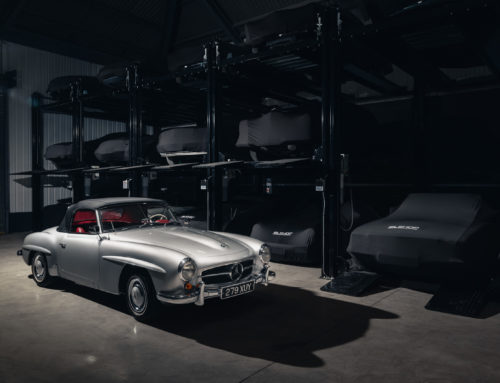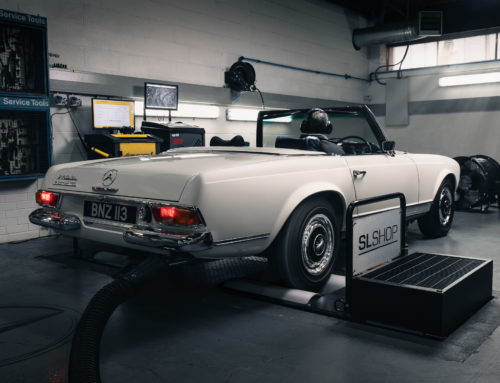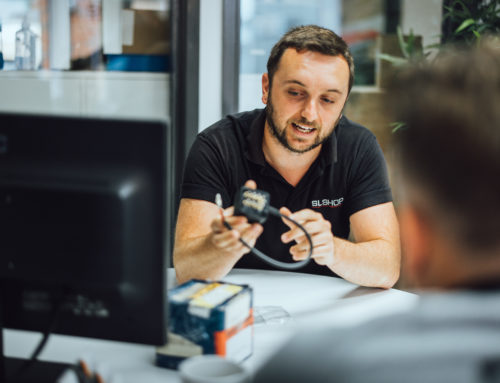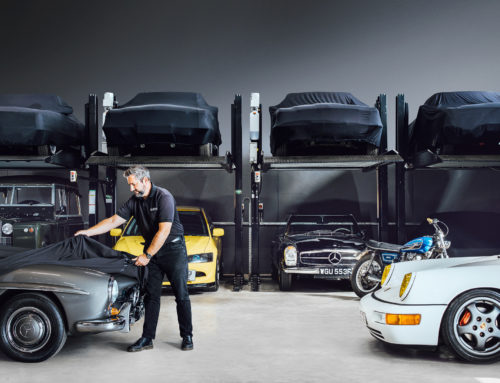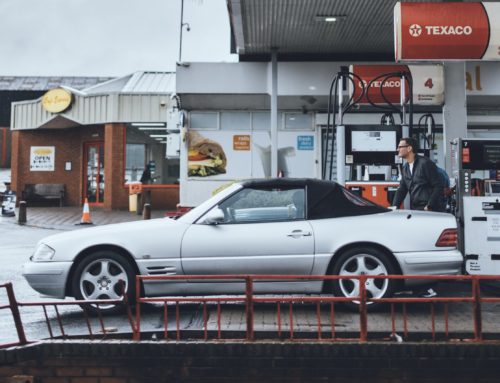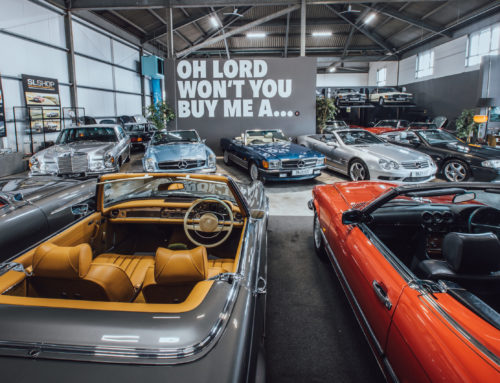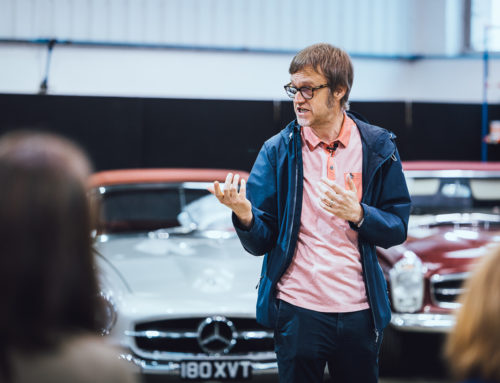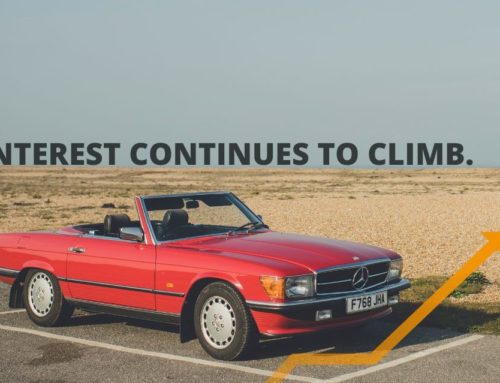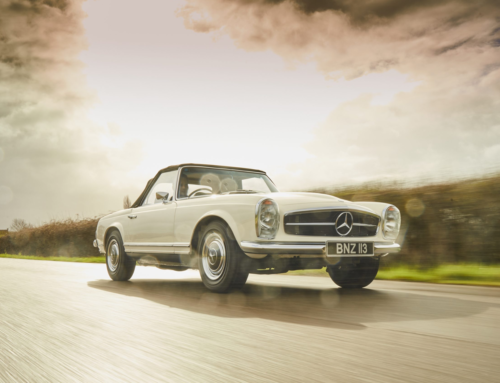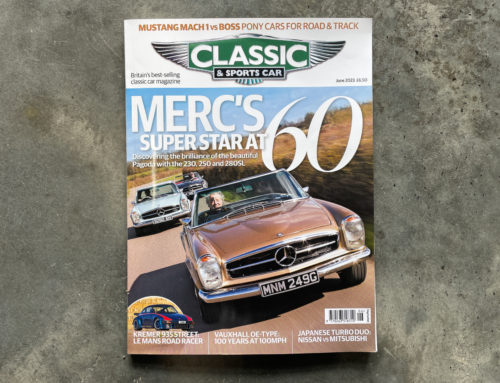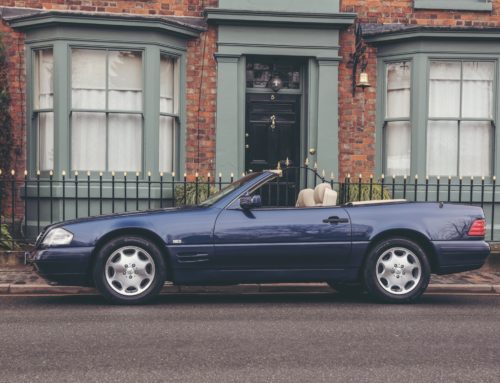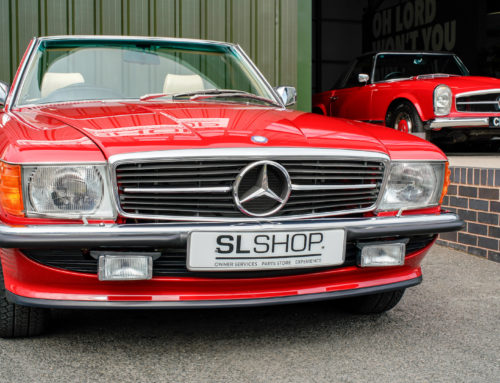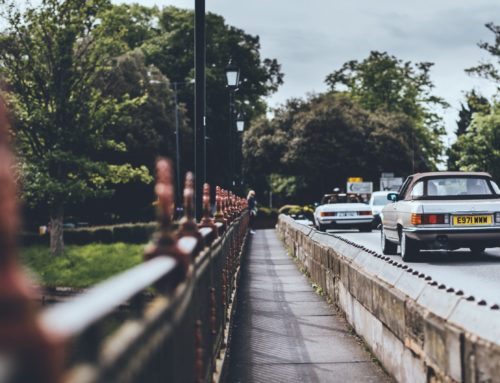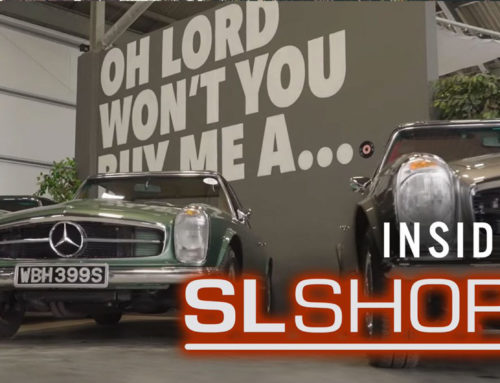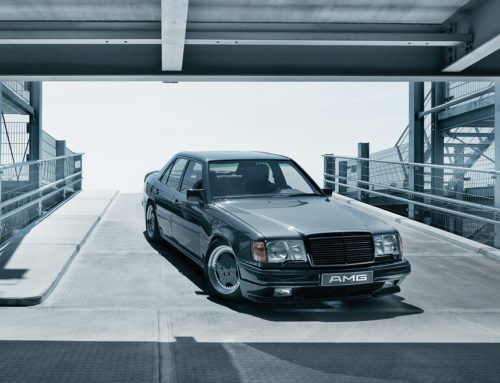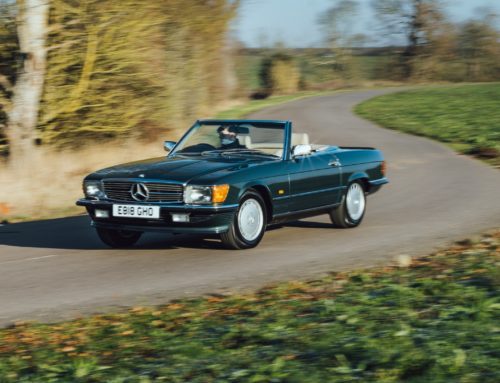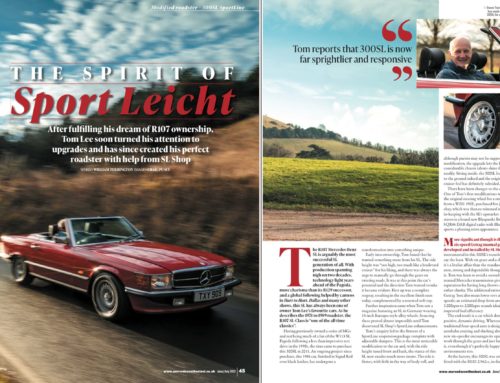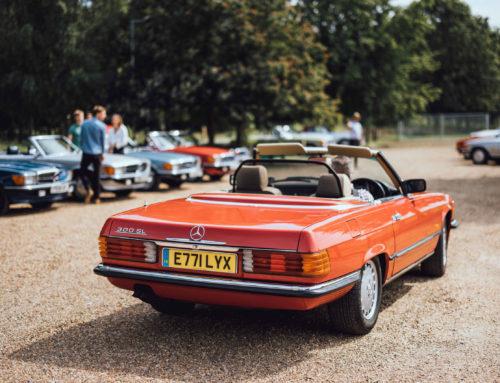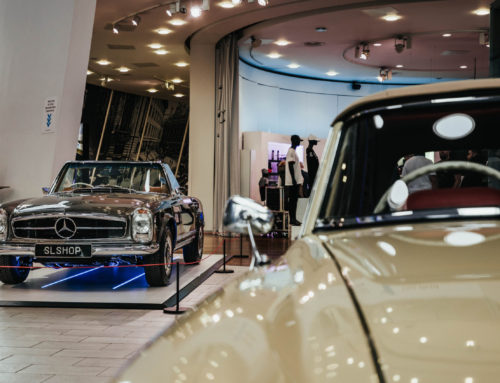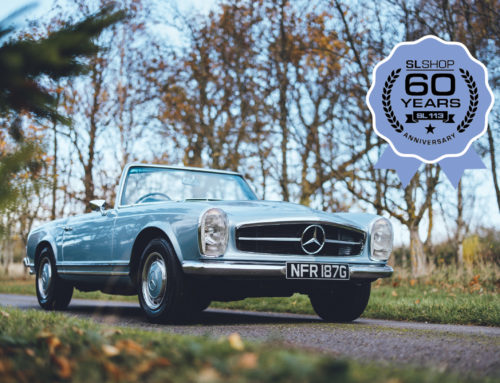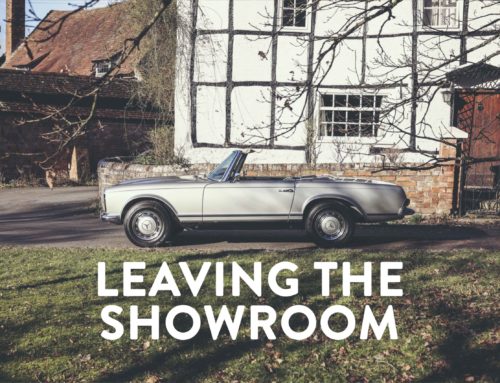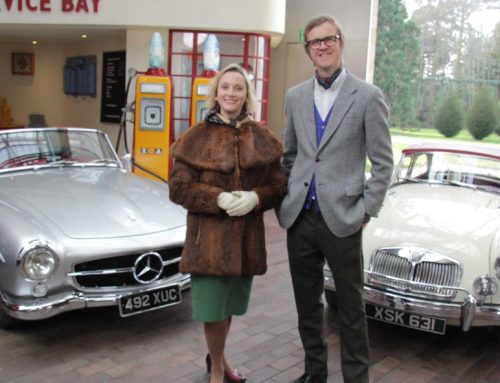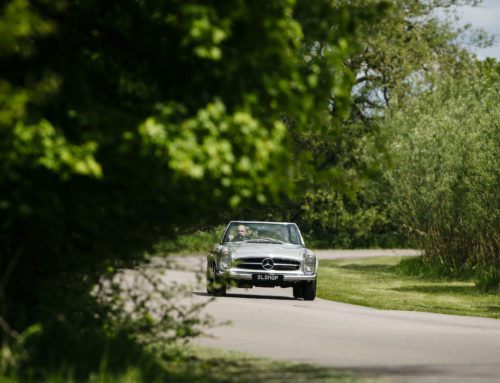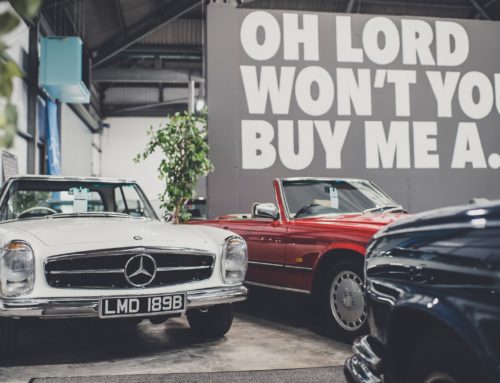Epic Restoration – Classic & Sports Car – ‘SVR’ Pagoda Restoration
This post was originally published in Classic & Sports Car Magazine.
“Imagine a 14ft-long Swiss watch – a very broken one“
The pretty Pagoda SL has shot up in value, which is just as well when you have to restore on as bad as this. How does £18,000 in new panels alone grab you?
The challenge was clear enough for The SL Shop. Take one rusty, ill-treated example of a complex hand-made car and rebuild it to a standard that would make even the most experienced nit-picker purr with satisfaction.
“We put it up on a ramp and assessed it,” says Bruce Greetham, co-director and restoration manager at The SL Shop. “But at that point no dismantling took place. We thought we’d got a typical unloved car and warned the owner it could get a whole lot worse when we stripped it down, but he knew what he wanted. He told us to build the best car that we possibly could – something that would satisfy his eye for detail.”
The meteoric rise in price of the Mercedes W113 ‘Pagoda’ SL has been one of the more eye-catching trends in the classic car market. Admirers have always enjoyed its quality engineering, handsome looks and all-round ability, but the 17-year reign of its much more potent successor, the R107 SL, probably delayed its arrival as a nailed-on classic. Even after that status became assured, values failed to match restoration coats or even upkeep until relatively recently.
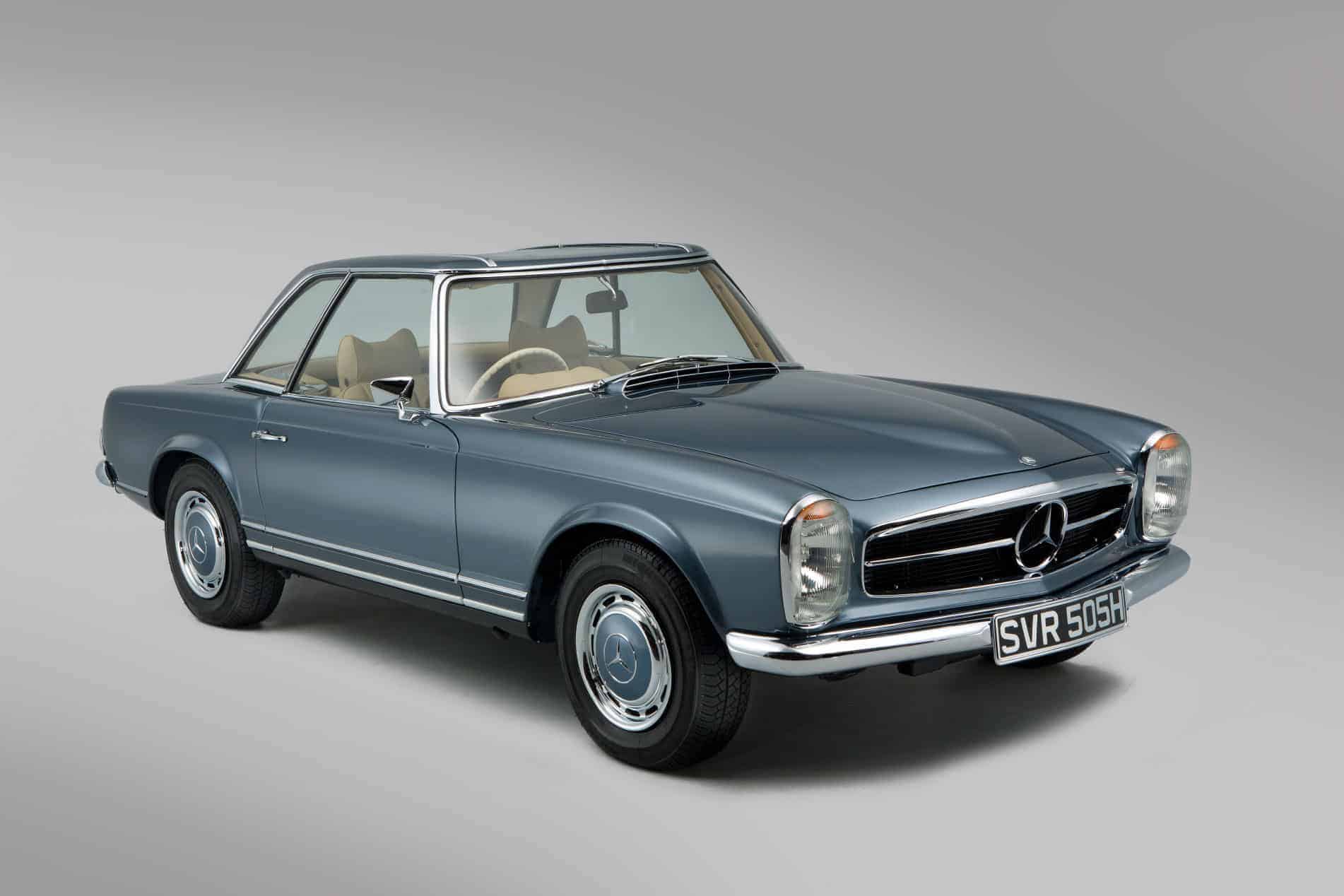
Add a well-deserved reputation for toughness (Sixties Mercedes were always recommended as classic you could genuinely use every day, like the Volvo Amazon) and it’s no surprise that so many led hard lives. Seeing them parked on the street, especially in London, was a common sight until recently. But like the Amazon, the Pagoda was merely durable rather than immortal, even if it did manage to hide serious corrosion better than most. That said, the W113 does not revel in shabby-chic cosmetics or rough-and-ready servicing. Don’t think of it as an old car, think of it as a 14ft-long Swiss watch. This one was rather broken.
Unlike an ancient Breguet or a Jaeger-LeCoultre, you can source spare parts for a Pagoda SL relatively easily…if you can afford them. The grille shell, three-pointed star emblem and grille for the front of the SL was £2000 two years ago. It’s now £4000. The exhaust system, which must be welded precisely in place once fitted, is another two-grand bill. At least this car had one major factor on its side, and it’s the reason it was chosen by the owner as a good subject to restore.
“Everyone wants right-hand-drive 280 SL automatics,” says Bruce Greetham. “You could buy lhd for 20-30% less but they would cost the same to restore.”
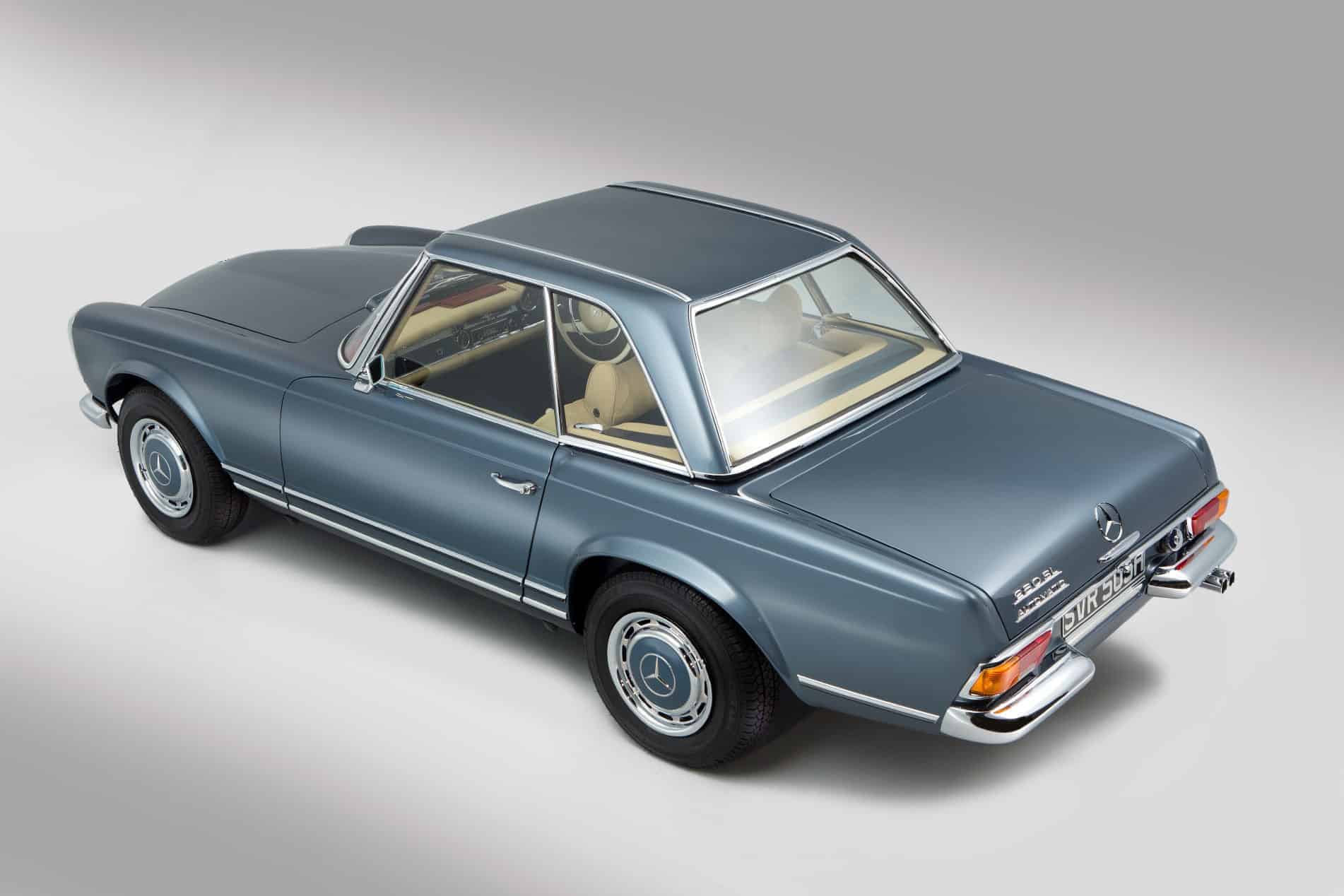
Ah yes, the cost. When assessing any Pagoda SL for full restoration, Greetham warns that the bill could rise to £120-£130k. But even that is an open-ended prognosis; if the car turns out to be much worse than expected, the bill goes higher still. And this car? It delivered some nasty shocks. “There was 10mm of filler on the bonnet,” says Greetham. “It was some kind of ham-fisted repair after accident damage. Once we’d stripped the car for soda blasting we found a lot more than needed replacing. T was in very poor condition.”
It wasn’t just the decayed steel that led to this description. Restoring the fabric of the car made little sense without ensuring it was returned to the correct specification at the same time.
“We found various 230SL components on it,” continues Greetham. “I had to research everything to make sure it was right, and it’s a minefield – I put this fear into the team before we started!”
Finally, after several weeks of patient dismantling, assessment, photography and note-taking, the soda blasting of the denuded shell revealed the starting point from which the team would have to work. Up until then, they’d only been making it worse. Not it was time to start making it better.
Phil Dorrell is the restoration foreman and was closely involved from start to finish. He starts counting on his fingers as he lists all the major repairs and new panels required by the shell, but soon runs out of digits. In the end, we decide to try and list what wasn’t touched – and the roll-call is shockingly brief.
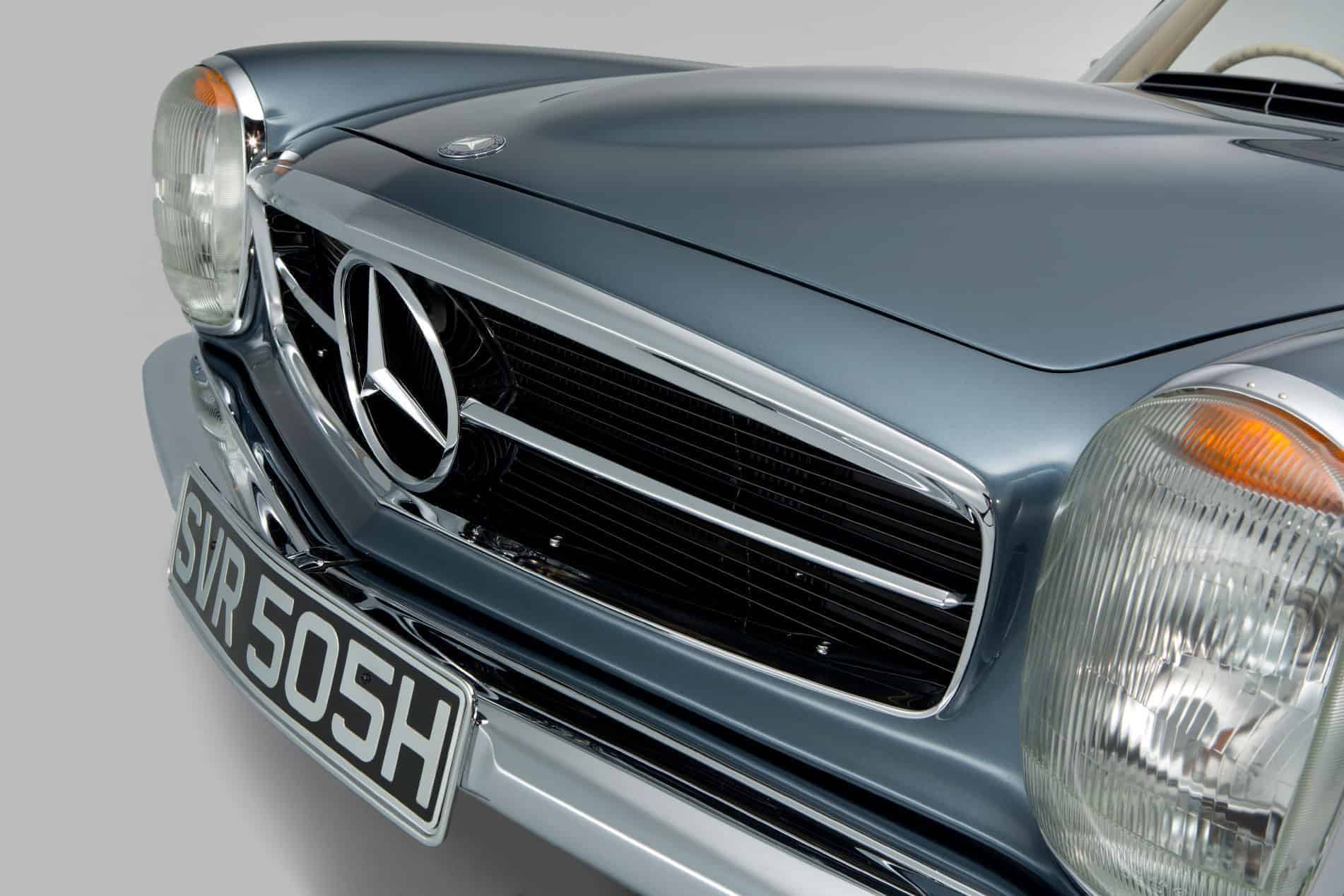
“Er, transmission tunnel, front and rear scuttle, front chassis legs. Ithink that’s it,” says Dorrell.
Bodywork
This radical approach to panel replacement had two reasons behind it. Firstly, many of the less visible areas such as floors and sills were badly rusted through. Cutting out only the rusted parts and letting in new metal would have retained more original steel in the shell, but to return the car to a factory-fresh state the only sensible way forward was to buy Mercedes panels – a front and rear floorpan, a sill inner box and so on – and let in the whole thing with spot welds to mimic the originals.
Secondly, some exterior panels were just too badly damaged to re-use without trowelling on as much as they’d just been stripped of. That bonnet appeared to have been beaten up with a hammer, suggesting a have-a-go approach to dent removal that had been heavily disguised. Elsewhere, the front wings, valance, rear quarter panels and various other areas had been extensively patched. Cosmetic repairs could have improved on this kind of thing, but only with a vast investment of man-hours and probably with some compromise to the overall straightness of the main body lines and panel fit. And this is a colossal job in itself on an SL.
“We took numerous measurements throughout and discovered the driver’s side of the car is 5mm longer!” explains Phil Dorrell. “That was possibly because of the way it was made – when the front and rear quarters were on, the aluminium door skins and bootlid would be offered up as oversize panels and cut to size. We had to do it backwards…we were using old doors and a second-hand bootlid, so they were a fixed size.
We put them on, clamped the front and rear quarters on the car and jiggled them about until we could get the lines and door gaps right. That took three weeks.”
It required a team effort, often with someone pushing or pulling on part of a panel to get it stressed into its final position before it was welded in to place. And it wasn’t just the large pieces that required consummate care in alignment.
“We had to weld in the headlamp bowls, which of course were rusty and had to come out of each front wing for replacement. But the exact position of the bowls affects where the trims fit, which in turn affects the whole line of the wing. It was a massive test of patience.” The final panel bill was £18,000 – before taking into account the painstaking expert labour required to fit them. And there was still a lot to do to the rest of the car.
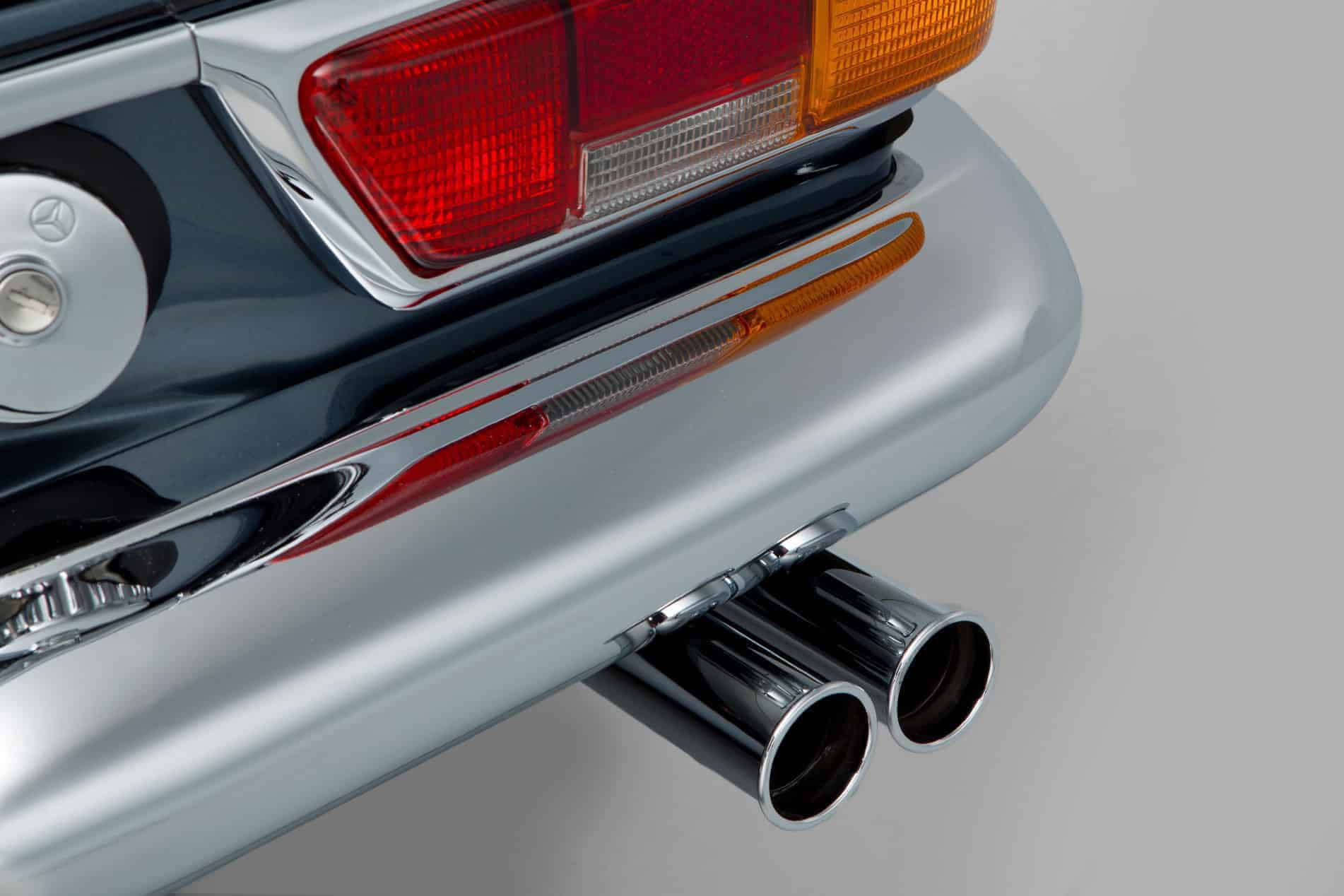
Drivetrain and running gear
Simon Ward looked after the mechanical build-up when the project finally moved from repair to assembly. He recounts the work to the running gear and driveline.
“The brakes were renewed all around, as were the brake pipes that I painted in the correct shade of green. The rear axle needed only new bearings and gaskets, plus preparation for a new coat of paint. The engine and gearbox went to two of our local sub-contractors.”
The SL Shop works with a transmission specialist who must be more specialists than almost any other in the country – he only works with Mercedes ‘boxes from the Fifties to the Eighties. The engine builders, also experienced Mercedes specialists, replaced all six pistons and rings, main and big end bearings, valves and valve seats – though these SL engines will cope with unleaded fuel. The crankshaft needed a re-grind to be re-usable but the samshaft had to be replaced.
“The mechanical injection pump was also rebuilt with new seals and then carefully calibrated. The three internal settings – idle, mixture and mid-range enrichment – should not need touching once the pump is reunited with the engine.”
“The powder coating is done by a plating company that also ensures the bits of alloy have the right dull finish, something it achieves with a soda blast, says Bruce Greetham. “It also looks after the yellow passivated finish on the bolts that are used all over the car.”
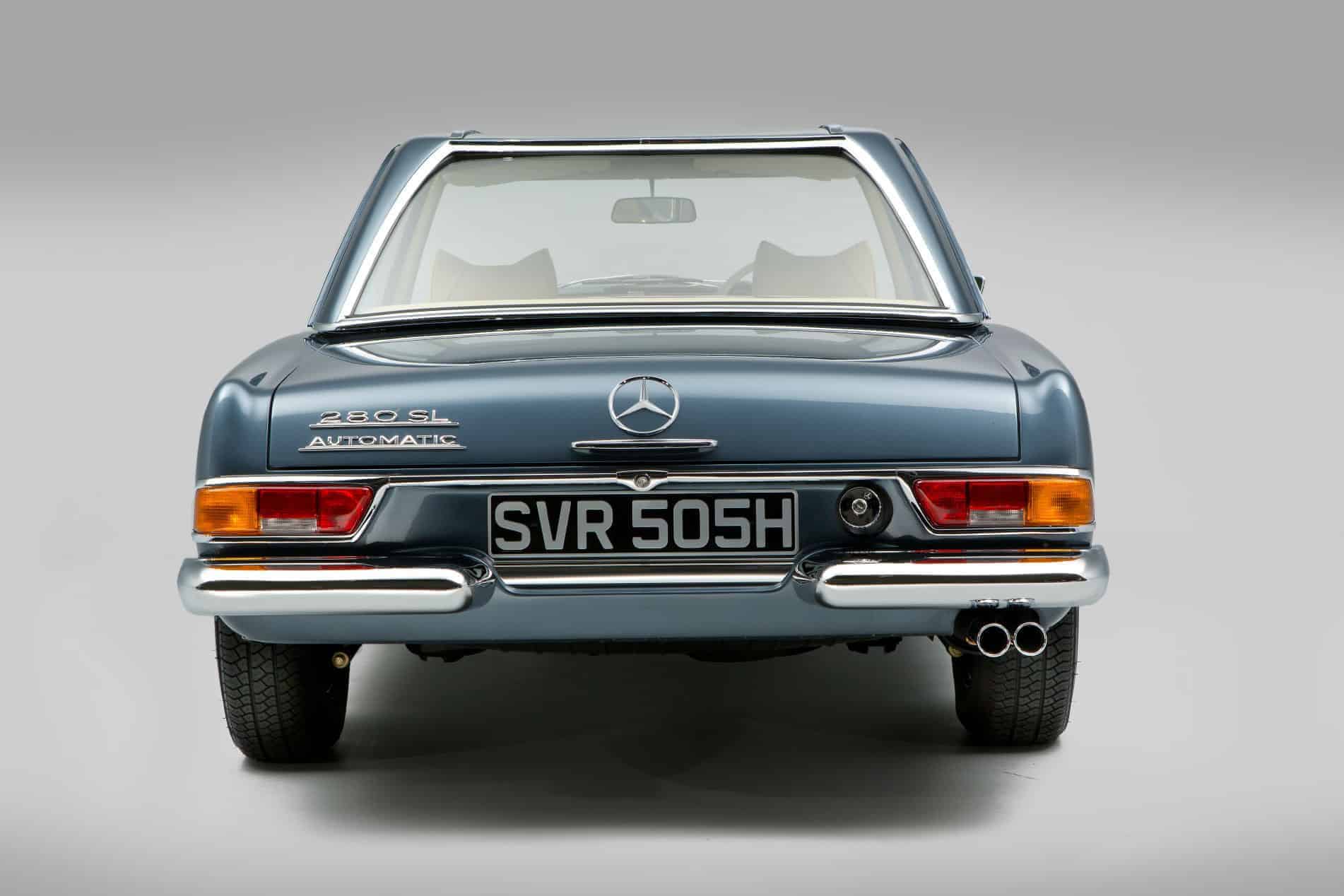
Electrics
While the work to the shell continued, Simon Ward got round to examining the original wiring loom – and it more or less condemned itself.
“it was absolutely butchered,” he says. “There was a live feed from the coil being used to power the windscreen wipers! We could have sourced a new Mercedes one from Germany for £1600 but we were able to obtain one that was built to better specifications by two technical directors of the Mercedes-Benz Club. It comes with a hazard warning fitment and facilities for audio, plus it’s a better quality of wire. However, the external look is accurate for the period, which was just as important.”
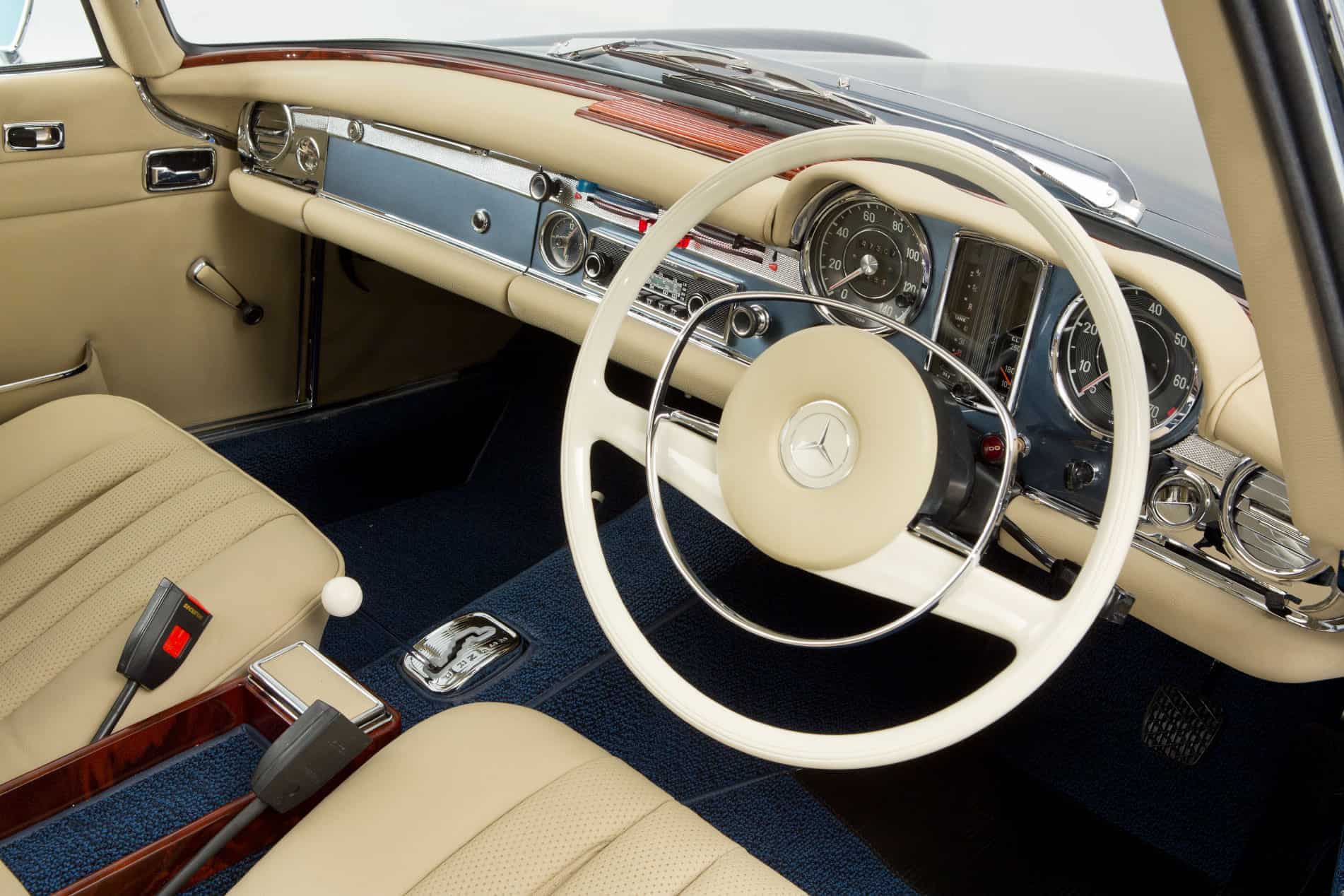
Trim and details
As the middle phase of the restoration progresses, Bruce Greetham’s meetings with the car’s owner started to move the objective in a slightly different direction. What began as a free-reign attempt to build one man’s dream 280 SL was migrating in the direction of a ‘data card restoration’, as Greetham calls the process of returning a car to precisely the specification shown on the factory build sheet.
“For purity and value, stick to original spec,” says Greetham. “You can get close to that and there’s still room for some personal choice.”
The careworn staff in the fabrication shop performed a first trial-fit of the chromework and then waved goodbye to the body as it departed for a coat of etch primer. After a check and final adjustment of the panel gaps and other variables came a polyurethane coat and a second trial fit of chromed items, seals and other fittings, performed by the paintshop. At this stage, no rechroming had been done; a small tweak to the shape of one moulding could be vital for a perfect fit and that could only be made before replating. When the cost of the brightwork was totted up, new items and the replating of old ones came to a painful £10k.
The choice of the paint shade has a bearing on the interior trim if you’re making a concerted effort to stick with either the combination original to the car or, in this case, a combination authentic to the model as offered by dealers in period.
The owner’s decision to go with the car’s original 396 Medium Blue paint came after a morning comparing swatches and colour combinations. He and his wife opted for Mercedes cream leather (209) with a blue soft-top (744) and blue twin-loop carpet (5003). A white steering wheel finished the look after the car went for trimming, but before that, Phil Dorrell, Simon Wood and Dan Griffin had to re-install all the running gear in the freshly painted shell.
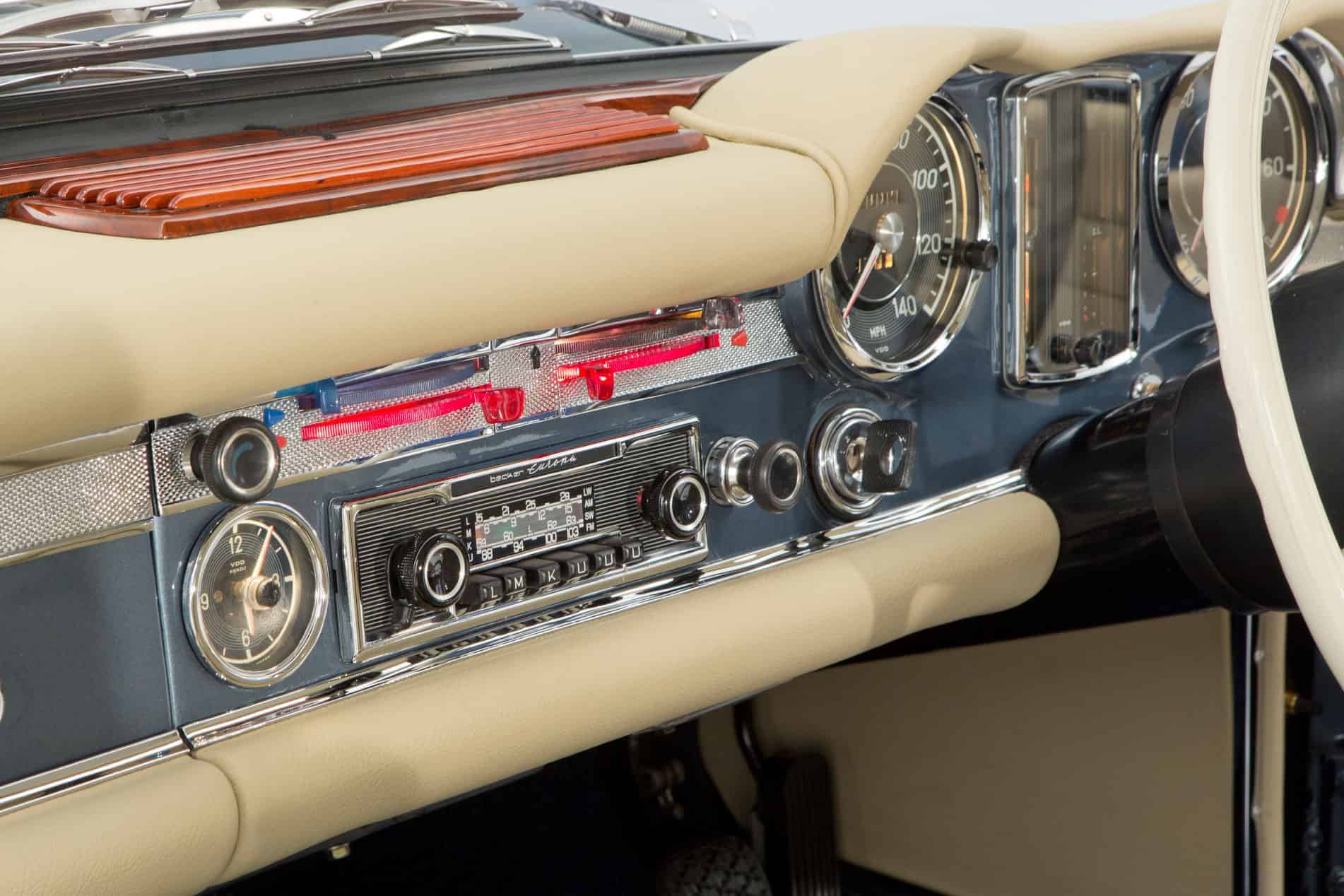
Reassembly
“The worst job was getting the engine in,” says Wood. “We had to take the inlets and exhausts off, mate the engine to the gearbox, fasten the whole lot to the subframe and very carefully drop the car down over it.”
The inlet apparatus includes the famous Bosch multi-point fuel injection, driven by a mechanical pump that resembles a miniature straight-six engine and that does indeed operate six tiny plungers on a crankshaft, each producing a precisely-timed squirt of fuel past an open inlet valve – assuming everything is set up correctly. And if it is, it still has to be made to work with the automatic transmission.
“That was another struggle,” recalls Dorrell. “First you have to balance the throttle-body-to-pump linkage, then balance how the vacuum feed to the transmission and the transmission linkage itself are working. There’s an inspection panel in the transmission tunnel; we took it off and it allowed us to make adjustments while driving along until it was just right.”
To get the car running, Simon Wood’s nice new loom was fitted to feed the dials and switches in the fash (capped with high-gloss new wood from America), all of which were only loosely fitted until proven to work.
Heating and cooling was plumbed in with period-correct replacement pipes, radiators and oil cooler. With the fuel tank, soft and hard-top seals in place, the newly mobile car was sent to the trim shop.
“We work with a sub-contractor who can supply and fit the correct leather in exactly the grain used by the factory,” says Greetham. “It got the Berber wool carpet in the right weave for the year of the car too… that’s the level and depth of detail we had to get into.”
With even tiny items like the ashtray costing several hundred pounds to replace, just keeping track of every small part that needed re-plating or replacing was an organisational challenge. But it’s paid off – the sense of peering at the workings of a giant Swiss watch is reinforced as Dan Griffin, Dorrell and Wood carefully close the bonnet after one final test of patience deep in the engine bay. Everything has that silky, close-fit quality that speaks of obsessively high Teutonic build standards, now replicated in the SL Shop’s new premises outside Stratford-upon-Avon.
When we saw the car it was as fresh as any restoration could be, but the shakedown phase was just beginning. The four new coil springs sit high, currently using the smallest rubber cup shims to keep the car’s ride height correct. After 500 miles the suspension will have settled a bit and different spacers can be employed to ensure the car sits level.
By the time you read this, the owner will have taken delivery of his perfect SL just in time for a summer trip to the South of France. After commissioning a show-quality restoration, it’s good to see that he intends to use the SL for what it’s best at.
Do you own a Pagoda? Do you struggle to find a specialist that gives it the attention it deserves?
Contact our Workshops team by email us.
Looking for your dream car?
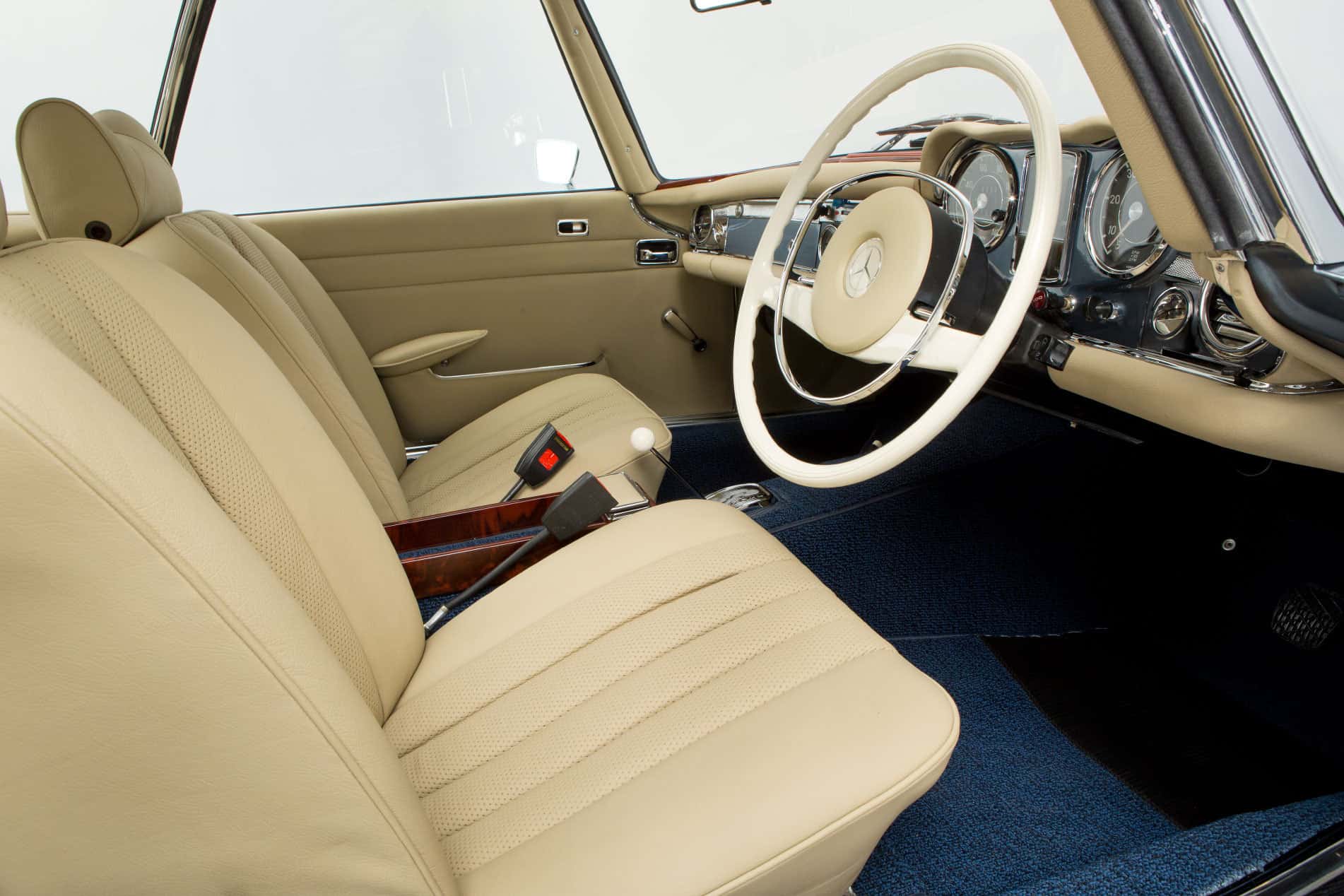
Share With Your Fellow Enthusiasts
Epic Restoration – Classic & Sports Car – ‘SVR’ Pagoda Restoration
This post was originally published in Classic & Sports Car Magazine.
“Imagine a 14ft-long Swiss watch – a very broken one“
The pretty Pagoda SL has shot up in value, which is just as well when you have to restore on as bad as this. How does £18,000 in new panels alone grab you?
The challenge was clear enough for The SL Shop. Take one rusty, ill-treated example of a complex hand-made car and rebuild it to a standard that would make even the most experienced nit-picker purr with satisfaction.
“We put it up on a ramp and assessed it,” says Bruce Greetham, co-director and restoration manager at The SL Shop. “But at that point no dismantling took place. We thought we’d got a typical unloved car and warned the owner it could get a whole lot worse when we stripped it down, but he knew what he wanted. He told us to build the best car that we possibly could – something that would satisfy his eye for detail.”
The meteoric rise in price of the Mercedes W113 ‘Pagoda’ SL has been one of the more eye-catching trends in the classic car market. Admirers have always enjoyed its quality engineering, handsome looks and all-round ability, but the 17-year reign of its much more potent successor, the R107 SL, probably delayed its arrival as a nailed-on classic. Even after that status became assured, values failed to match restoration coats or even upkeep until relatively recently.

Add a well-deserved reputation for toughness (Sixties Mercedes were always recommended as classic you could genuinely use every day, like the Volvo Amazon) and it’s no surprise that so many led hard lives. Seeing them parked on the street, especially in London, was a common sight until recently. But like the Amazon, the Pagoda was merely durable rather than immortal, even if it did manage to hide serious corrosion better than most. That said, the W113 does not revel in shabby-chic cosmetics or rough-and-ready servicing. Don’t think of it as an old car, think of it as a 14ft-long Swiss watch. This one was rather broken.
Unlike an ancient Breguet or a Jaeger-LeCoultre, you can source spare parts for a Pagoda SL relatively easily…if you can afford them. The grille shell, three-pointed star emblem and grille for the front of the SL was £2000 two years ago. It’s now £4000. The exhaust system, which must be welded precisely in place once fitted, is another two-grand bill. At least this car had one major factor on its side, and it’s the reason it was chosen by the owner as a good subject to restore.
“Everyone wants right-hand-drive 280 SL automatics,” says Bruce Greetham. “You could buy lhd for 20-30% less but they would cost the same to restore.”

Ah yes, the cost. When assessing any Pagoda SL for full restoration, Greetham warns that the bill could rise to £120-£130k. But even that is an open-ended prognosis; if the car turns out to be much worse than expected, the bill goes higher still. And this car? It delivered some nasty shocks. “There was 10mm of filler on the bonnet,” says Greetham. “It was some kind of ham-fisted repair after accident damage. Once we’d stripped the car for soda blasting we found a lot more than needed replacing. T was in very poor condition.”
It wasn’t just the decayed steel that led to this description. Restoring the fabric of the car made little sense without ensuring it was returned to the correct specification at the same time.
“We found various 230SL components on it,” continues Greetham. “I had to research everything to make sure it was right, and it’s a minefield – I put this fear into the team before we started!”
Finally, after several weeks of patient dismantling, assessment, photography and note-taking, the soda blasting of the denuded shell revealed the starting point from which the team would have to work. Up until then, they’d only been making it worse. Not it was time to start making it better.
Phil Dorrell is the restoration foreman and was closely involved from start to finish. He starts counting on his fingers as he lists all the major repairs and new panels required by the shell, but soon runs out of digits. In the end, we decide to try and list what wasn’t touched – and the roll-call is shockingly brief.

“Er, transmission tunnel, front and rear scuttle, front chassis legs. Ithink that’s it,” says Dorrell.
Bodywork
This radical approach to panel replacement had two reasons behind it. Firstly, many of the less visible areas such as floors and sills were badly rusted through. Cutting out only the rusted parts and letting in new metal would have retained more original steel in the shell, but to return the car to a factory-fresh state the only sensible way forward was to buy Mercedes panels – a front and rear floorpan, a sill inner box and so on – and let in the whole thing with spot welds to mimic the originals.
Secondly, some exterior panels were just too badly damaged to re-use without trowelling on as much as they’d just been stripped of. That bonnet appeared to have been beaten up with a hammer, suggesting a have-a-go approach to dent removal that had been heavily disguised. Elsewhere, the front wings, valance, rear quarter panels and various other areas had been extensively patched. Cosmetic repairs could have improved on this kind of thing, but only with a vast investment of man-hours and probably with some compromise to the overall straightness of the main body lines and panel fit. And this is a colossal job in itself on an SL.
“We took numerous measurements throughout and discovered the driver’s side of the car is 5mm longer!” explains Phil Dorrell. “That was possibly because of the way it was made – when the front and rear quarters were on, the aluminium door skins and bootlid would be offered up as oversize panels and cut to size. We had to do it backwards…we were using old doors and a second-hand bootlid, so they were a fixed size.
We put them on, clamped the front and rear quarters on the car and jiggled them about until we could get the lines and door gaps right. That took three weeks.”
It required a team effort, often with someone pushing or pulling on part of a panel to get it stressed into its final position before it was welded in to place. And it wasn’t just the large pieces that required consummate care in alignment.
“We had to weld in the headlamp bowls, which of course were rusty and had to come out of each front wing for replacement. But the exact position of the bowls affects where the trims fit, which in turn affects the whole line of the wing. It was a massive test of patience.” The final panel bill was £18,000 – before taking into account the painstaking expert labour required to fit them. And there was still a lot to do to the rest of the car.

Drivetrain and running gear
Simon Ward looked after the mechanical build-up when the project finally moved from repair to assembly. He recounts the work to the running gear and driveline.
“The brakes were renewed all around, as were the brake pipes that I painted in the correct shade of green. The rear axle needed only new bearings and gaskets, plus preparation for a new coat of paint. The engine and gearbox went to two of our local sub-contractors.”
The SL Shop works with a transmission specialist who must be more specialists than almost any other in the country – he only works with Mercedes ‘boxes from the Fifties to the Eighties. The engine builders, also experienced Mercedes specialists, replaced all six pistons and rings, main and big end bearings, valves and valve seats – though these SL engines will cope with unleaded fuel. The crankshaft needed a re-grind to be re-usable but the samshaft had to be replaced.
“The mechanical injection pump was also rebuilt with new seals and then carefully calibrated. The three internal settings – idle, mixture and mid-range enrichment – should not need touching once the pump is reunited with the engine.”
“The powder coating is done by a plating company that also ensures the bits of alloy have the right dull finish, something it achieves with a soda blast, says Bruce Greetham. “It also looks after the yellow passivated finish on the bolts that are used all over the car.”

Electrics
While the work to the shell continued, Simon Ward got round to examining the original wiring loom – and it more or less condemned itself.
“it was absolutely butchered,” he says. “There was a live feed from the coil being used to power the windscreen wipers! We could have sourced a new Mercedes one from Germany for £1600 but we were able to obtain one that was built to better specifications by two technical directors of the Mercedes-Benz Club. It comes with a hazard warning fitment and facilities for audio, plus it’s a better quality of wire. However, the external look is accurate for the period, which was just as important.”

Trim and details
As the middle phase of the restoration progresses, Bruce Greetham’s meetings with the car’s owner started to move the objective in a slightly different direction. What began as a free-reign attempt to build one man’s dream 280 SL was migrating in the direction of a ‘data card restoration’, as Greetham calls the process of returning a car to precisely the specification shown on the factory build sheet.
“For purity and value, stick to original spec,” says Greetham. “You can get close to that and there’s still room for some personal choice.”
The careworn staff in the fabrication shop performed a first trial-fit of the chromework and then waved goodbye to the body as it departed for a coat of etch primer. After a check and final adjustment of the panel gaps and other variables came a polyurethane coat and a second trial fit of chromed items, seals and other fittings, performed by the paintshop. At this stage, no rechroming had been done; a small tweak to the shape of one moulding could be vital for a perfect fit and that could only be made before replating. When the cost of the brightwork was totted up, new items and the replating of old ones came to a painful £10k.
The choice of the paint shade has a bearing on the interior trim if you’re making a concerted effort to stick with either the combination original to the car or, in this case, a combination authentic to the model as offered by dealers in period.
The owner’s decision to go with the car’s original 396 Medium Blue paint came after a morning comparing swatches and colour combinations. He and his wife opted for Mercedes cream leather (209) with a blue soft-top (744) and blue twin-loop carpet (5003). A white steering wheel finished the look after the car went for trimming, but before that, Phil Dorrell, Simon Wood and Dan Griffin had to re-install all the running gear in the freshly painted shell.

Reassembly
“The worst job was getting the engine in,” says Wood. “We had to take the inlets and exhausts off, mate the engine to the gearbox, fasten the whole lot to the subframe and very carefully drop the car down over it.”
The inlet apparatus includes the famous Bosch multi-point fuel injection, driven by a mechanical pump that resembles a miniature straight-six engine and that does indeed operate six tiny plungers on a crankshaft, each producing a precisely-timed squirt of fuel past an open inlet valve – assuming everything is set up correctly. And if it is, it still has to be made to work with the automatic transmission.
“That was another struggle,” recalls Dorrell. “First you have to balance the throttle-body-to-pump linkage, then balance how the vacuum feed to the transmission and the transmission linkage itself are working. There’s an inspection panel in the transmission tunnel; we took it off and it allowed us to make adjustments while driving along until it was just right.”
To get the car running, Simon Wood’s nice new loom was fitted to feed the dials and switches in the fash (capped with high-gloss new wood from America), all of which were only loosely fitted until proven to work.
Heating and cooling was plumbed in with period-correct replacement pipes, radiators and oil cooler. With the fuel tank, soft and hard-top seals in place, the newly mobile car was sent to the trim shop.
“We work with a sub-contractor who can supply and fit the correct leather in exactly the grain used by the factory,” says Greetham. “It got the Berber wool carpet in the right weave for the year of the car too… that’s the level and depth of detail we had to get into.”
With even tiny items like the ashtray costing several hundred pounds to replace, just keeping track of every small part that needed re-plating or replacing was an organisational challenge. But it’s paid off – the sense of peering at the workings of a giant Swiss watch is reinforced as Dan Griffin, Dorrell and Wood carefully close the bonnet after one final test of patience deep in the engine bay. Everything has that silky, close-fit quality that speaks of obsessively high Teutonic build standards, now replicated in the SL Shop’s new premises outside Stratford-upon-Avon.
When we saw the car it was as fresh as any restoration could be, but the shakedown phase was just beginning. The four new coil springs sit high, currently using the smallest rubber cup shims to keep the car’s ride height correct. After 500 miles the suspension will have settled a bit and different spacers can be employed to ensure the car sits level.
By the time you read this, the owner will have taken delivery of his perfect SL just in time for a summer trip to the South of France. After commissioning a show-quality restoration, it’s good to see that he intends to use the SL for what it’s best at.
Do you own a Pagoda? Do you struggle to find a specialist that gives it the attention it deserves?
Contact our Workshops team by email us.
Looking for your dream car?

Share With Your Fellow Enthusiasts
More from Journal
CARE
THE ULTIMATE CERTIFIED SERVICING INVESTMENT PLAN
Your ownership journey matters to us, which is why we have created a simple certified servicing investment plan, tailored to your individual needs and aspirations.
Start investing today and our dedicated CARE team will work with you to increase the value and enjoyment you receive from your vehicle.

STAY IN TUNE WITH SLSHOP MOMENTS
As part of SLSHOP’s community of enthusiasts, you’ll be the first to hear about events and tours, key product offers, exciting stories from owners around the world and of course… our latest additions to the showroom. So, be the first to know and you might just sneak a car on your driveway or take your car’s condition to new heights with our exclusive replacement parts.
Or, visit SLSHOP Journal
